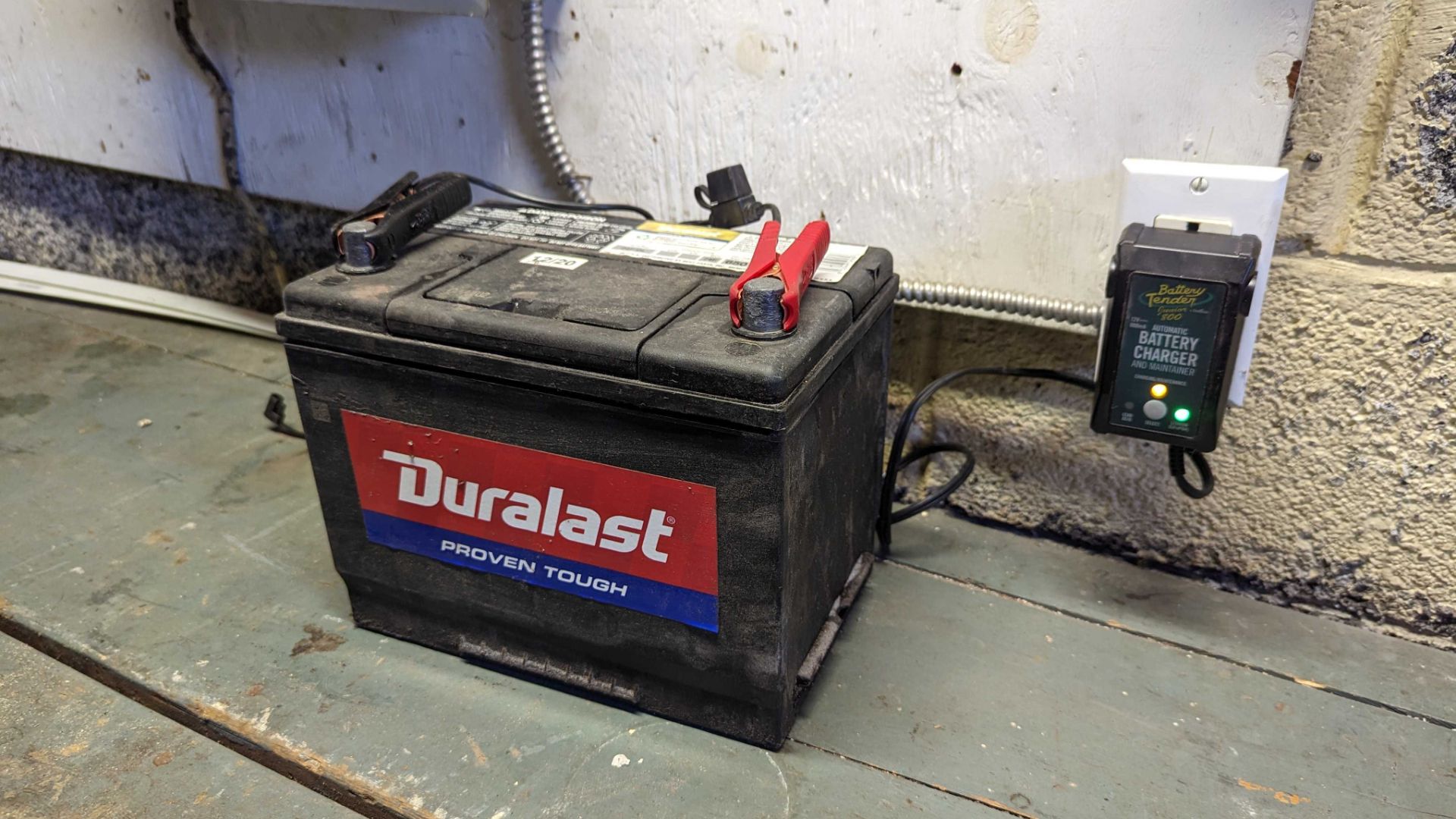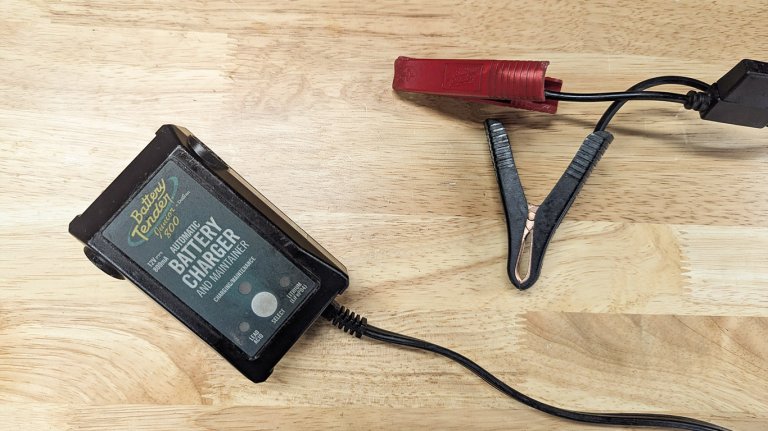

We may earn revenue from the products available on this page and participate in affiliate programs. Learn more ›
This is no joke: I recently woke up from a nightmare where my motorcycle wouldn’t start. Subconsciously, I’d been thinking about the fact I hadn’t ridden it in seven weeks and knew that was taking a toll on my bike’s battery. Now, at the very least, I need to hook it up to a trickle charger, but most likely, I’ll need to start using a battery maintainer.
Don’t make the same mistake I made. If there’s ever a time you can’t use your vehicle for an extended period, hook it up to a trickle charger, as it’ll save you money and hassle in the long run.
If you’re unsure about how these battery-saving devices work, fear not, as The Drive’s crack team of garage experts is here to help.
Here’s how a trickle charger works
Trickle chargers generally send between one and three amps to your vehicle’s battery from an outlet socket. Relatively speaking, this is a very low amperage, hence the name “trickle” charger. This trickle of current stops your battery from discharging when it’s not in use and slowly recharges it.
If you haven’t been using your vehicle regularly, the alternator might not completely recharge the battery when you go for a drive. This is when you need a trickle charger to bring your battery back to life. However, it would take days to fully charge a dead battery using a trickle charger. These products are designed to keep your battery topped off and should be viewed as a way to prevent a dead battery rather than recharge one.

You can usually set the voltage of your trickle charger to match your battery and ensure you don’t damage it. The problem is that most classic trickle chargers will continue to charge your battery regardless of if it’s fully charged or not. So, if you’re not careful, you can overcharge your battery and harm it. This means you can’t leave a trickle charger on indefinitely without the risk of damaging your battery. Thankfully, there are products to help you overcome this issue.
Subscribe to Drive Wire. Stay up to speed with the latest news, car reviews, and culture stories sent straight to your inbox daily.
What is a battery maintainer?
A battery maintainer, sometimes known as a “float charger” or “smart trickle charger”, works the same way as a trickle charger. However, once a battery maintainer detects that your battery is fully charged, it goes into “float mode”, which protects your battery from overcharging. When a battery maintainer detects that your battery’s charge has dropped below its optimum level, it will begin charging it again.
Battery maintainers, such as the Battery Tender Junior 800 Automatic Battery Charger, are perfect for people who want to plug in and forget. Many battery maintainers can provide a lot more amperage than trickle chargers, enabling them to bring batteries back to life much faster than a classic trickle charger. Some of these maintainers will even desulfate batteries.
In short, a battery maintainer should keep your battery healthy the same way a trickle charger can, but you’ll never need to worry about overcharging.

Here’s how to connect a trickle charger
Firstly, review your specific model’s owners manual and check how the manufacturer suggests to hook up its trickle charger. Generally, you connect a trickle charger and battery maintainer the same way. The first thing you need to do is ensure your vehicle is in a well-ventilated and dry area. Water and trickle chargers don’t mix.
Turn off the ignition, and remove your vehicle’s key. Do not plug in your trickle charger to an outlet yet, and if you can separate the included alligator clips from the charging unit, do this now.

Connect the red (positive) clip to your battery’s positive terminal before connecting the black (negative) clip to your battery’s negative terminal. Next, connect the other end of the alligator clip leads to your trickle charging unit before plugging the charging unit into an outlet socket.

Now that everything is connected, the trickle charger should turn on, and you’ll need to pick the appropriate setting for your battery. For example, you’ll need to set it up for a 6-volt, 12-volt, or AGM battery.
If you’re using a standard trickle charger, you’ll have to keep an eye on it and monitor your battery’s charging progress. Anyone who’s using a battery maintainer can leave it hooked up indefinitely, in theory.
Video
If you’re still confused about the difference between a trickle charger and a battery maintainer, check out this video from Smackey’s Garage.

